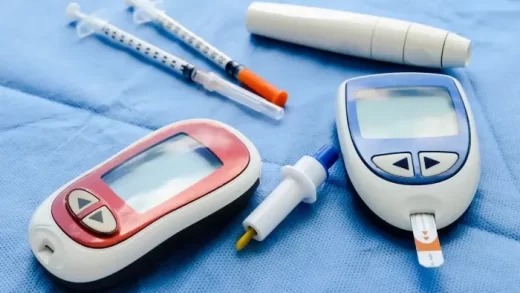Discover effective ways to boost your phone reception anywhere and stay connected with these easy-to-follow tips and tricks.
In today’s digital age, staying connected is crucial. Whether you’re making an important business call, navigating with GPS, or simply chatting with friends, a weak phone signal can be frustrating.
Poor reception can occur for many reasons – distance from a cell tower, thick building materials, or interference from other electronic devices.
Fortunately, there are ways to improve your phone’s reception, whether you’re at home, in the office, or traveling. In this article, we’ll explore effective tips to ensure you never lose signal again and boost your phone reception anywhere.
1. Understand the Causes of Poor Signal
Before diving into solutions, it’s essential to understand why you may experience weak phone reception. Several factors can affect your signal strength:
- Distance from the Cell Tower: The farther you are from a tower, the weaker your signal. Rural areas tend to have fewer towers, which can lead to connectivity issues.
- Building Materials: Thick walls, especially those made of metal or concrete, can block signals. Office buildings, basements, and even some modern homes may create barriers between your phone and the nearest cell tower.
- Interference: Other devices, such as microwaves, Bluetooth devices, or even certain weather conditions, can interfere with your signal.
Understanding these issues is the first step to solving them.
2. Switch to Wi-Fi Calling
One of the easiest solutions to weak cell signals is switching to Wi-Fi calling. Most modern smartphones and carriers support this feature, allowing you to make calls and send texts over a Wi-Fi network.
This can be especially useful in areas where cell signal is weak, such as inside buildings or in rural locations with reliable internet access. Check your phone settings and enable Wi-Fi calling to bypass poor cellular reception.
3. Install a Signal Booster
If you often face weak signal strength at home or in the office, investing in a signal booster could be the answer. A signal booster amplifies weak signals from outside and rebroadcasts them indoors.
The device usually comes with three main components: an external antenna (to capture the signal), a booster (to amplify the signal), and an internal antenna (to broadcast the signal indoors).
This solution is particularly effective if you live or work in an area with poor reception. Signal boosters work with most carriers and can significantly improve your reception indoors.
4. Find Your Nearest Cell Tower
Another way to improve your phone’s reception is to locate the nearest cell tower and position yourself accordingly. Several online tools and apps can help you find nearby cell towers.
Knowing the location of the tower can help you move to an area with stronger reception. If you’re inside a building, positioning yourself near a window or an open space closer to the cell tower can help increase your signal strength.
5. Use a Femtocell or Microcell
For those with consistently poor reception, a femtocell or microcell could be a game-changer. These devices act as mini cell towers, using your internet connection to create a local cellular network.
Femtocells are particularly useful in homes or offices with unreliable cellular signals. They work by connecting to your broadband and broadcasting a small area of strong cellular coverage, ensuring a reliable signal for calls and texts.
6. Update Your Phone’s Software
Outdated software can sometimes lead to reception problems. Regularly updating your phone’s operating system ensures that you have the latest features and improvements, including those that optimize signal reception.
Manufacturers often release software updates to fix bugs and improve overall phone performance, including connectivity.
7. Switch Carriers if Necessary
Not all mobile carriers offer the same level of service in every area. If you consistently experience poor signal in a particular location, it might be worth considering a switch to a different carrier.
Some carriers have better coverage in specific regions due to the location of their cell towers. Research coverage maps or use signal measurement apps to determine which carrier offers the best signal strength in your area.
8. Use Airplane Mode to Reset Your Connection
A quick and simple trick to improve your phone’s signal is to toggle airplane mode on and off. When you do this, your phone disconnects from all networks and reconnects to the nearest cell tower once airplane mode is turned off.
This can refresh your connection and help your phone find a stronger signal if it was previously connected to a weak one.
9. Reduce Background App Activity
Certain apps running in the background can slow down your phone’s performance and affect signal reception.
Apps that constantly use GPS like LIGames, download data, or refresh content can consume bandwidth, making it harder for your phone to maintain a strong connection to a cellular network. Close unnecessary apps and ensure that only essential services are running.
10. Check for Physical Obstructions
Sometimes, your phone case can block your phone’s antenna, leading to poor signal reception. If you’re experiencing weak signal, try removing your phone case and see if it improves.
Additionally, ensure there’s nothing in your immediate environment, like metal objects or other electronics, that might be causing interference.
Conclusion
Staying connected is more important than ever, and a weak phone signal shouldn’t get in the way of that.
By following these simple tips – from switching to Wi-Fi calling and investing in a signal booster to understanding the role of cell towers and keeping your phone’s software up to date – you can boost your phone reception anywhere.
Whether you’re at home, on the road, or in an area with limited coverage, there’s a solution to help you stay connected and never lose signal again.











